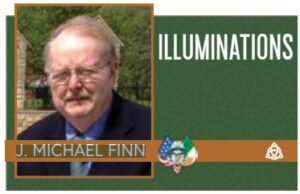Dark Day on
the Blaskets:
The Death of
Eveleen Nicholls
 Eveleen Constance Nicholls, Gaelic League activist, was born October 22, 1884, in Dublin, the second of four children born to Archibald J. Nicholls, a barrister and secretary of the Loan Fund Board of Ireland, and his wife, Mary, a native of Limerick. Although her father held a government job, with offices in Dublin Castle, the family had nationalist sympathies and they were all Irish-speakers.
Eveleen Constance Nicholls, Gaelic League activist, was born October 22, 1884, in Dublin, the second of four children born to Archibald J. Nicholls, a barrister and secretary of the Loan Fund Board of Ireland, and his wife, Mary, a native of Limerick. Although her father held a government job, with offices in Dublin Castle, the family had nationalist sympathies and they were all Irish-speakers.
Beginning in 1901, Eveleen chose to use the Irish spelling of her name, Eibhlín Nic Niocaill (Pron: eve-e-leen nik nick-coal). The Irish word “Nic” is used prior to the surname for ladies who are not married. For females, “Ní” replaces “Ó,” meaning “granddaughter of.” “Nic” replaces “Mac,” meaning “daughter of.”

Eibhlín attended school at the Loreto Convent in Rathmines and later at the Loreto Convent on St Stephen’s Green. Eibhlín excelled and was particularly talented at languages. She took first prizes in Irish, French, and German at her senior examination and went on to take Royal University of Ireland (RUI) courses through Loreto College.
Her college career was exceptional. She was always at the top of her class and won several awards and honors. For her Bachelor of Arts degree (1906), she came in first in Ireland and won the prestigious Steward Scholarship. She was awarded a £300 traveling scholarship to complete her Master of Arts degree, spending time in Germany and Paris, where she studied Old Irish under the Celtic scholar Henri d’Arbois de Jubainville. While lecturing at the University of Paris, she also organized a Parisian branch of the Gaelic League.
Gaelic League
Returning to Ireland, she became a prominent Gaelic League activist, joining the Five Provinces branch, lecturing, and contributing to the League newspaper, An Claidheamh Soluis (Pron: ahn klee-uhv sul-eesh: The Sword of Light). A strong feminist, she also wrote for the magazine Bean na hÉireann (Pron: ban na hay-ron: The Women of Ireland). Her articles linked the language revival to the Irish independence movement and tied in the rights of women.
In 1909, Eibhlín was elected to the executive committee of the Gaelic League and was the youngest person ever to receive this honor. Through her activities with the Gaelic League, she met and became good friends with Patrick Pearse, a fellow Irish language activist, educator, and eventual leader of the 1916 Easter Rebellion. Some say their friendship developed into a romantic relationship and they were engaged to be married; however, there is little evidence for the claim.
In the summer of 1909, Eibhlín set out for a tour of the Gaeltacht (Pron: galetaak), the Irish-speaking areas of west Kerry. She had spent previous summers on the Aran Islands. After a week in Dingle, Eibhlín went on to the town of Ventry. There she befriended the writer James Cousins, who described her as “tall, stately: an embodiment of sweetness and gentleness, sweetness that has no mawkishness in it, and a gentleness resting on fixity and fearlessness.”
From Ventry, Eibhlín traveled west to Dunquin, where she crossed the often dangerous three-mile Blasket Sound via currach, rowed by islandman Seán O’Cavanagh. She arrived on the Great Blasket Island (then home to 150 people) on July 13, 1909. She stayed in the house of Pádraig Ó Catháin (Pron: ca-hane), who was known as “the King of the Blasket.” The island and its inhabitants enchanted her, and she resolved on a long stay.
The Blasket Islands are a group of six islands approximately three miles off the southwest coast of the Dingle Peninsula in County Kerry. The Great Blasket Island is the largest of the island group. It is now a national park. In 1909, the only way to get to the Great Blasket was by currach via Dunquin Harbor. The islanders were all native Irish speakers, and because of this, they were visited and studied by many language activists and writers.
Eibhlín was very popular on the island and participated in the social life of the community. She gave swimming lessons to the children on the island, a significant contribution because few islanders knew how to swim.
On Friday, August 13, 1909, she was teaching Cáit, the daughter of Blasket writer Tomás O’Crohan, to swim in a beach area called the White Strand. Despite only being a few feet from the shore, Eibhlín and Cáit got into trouble. Cáit was struggling, and Eibhlín was making an effort to save her from drowning.
Cáit’s brother, Donal O’Crohan, who was nearby, attempted to save both of them. Another local, Peats Tom O’Cearnaigh, came to their aid, but he could only save Cáit.
Eibhlín and Donal O’Crohan drowned. Their deaths inspired a huge outpouring of grief both locally and nationally, particularly for the 24-year-old Eibhlín. Following a wake held on the island, the bodies were transported to the mainland across Blasket Sound on Sunday, August 15, 1909. The sad procession of 20 currachs sailing in the formation of a cross was led by the King’s currach, carrying Eibhlín’s coffin.
The news had spread, and the procession of mourners was greeted in Dunquin by a throng of people from all over West Kerry and beyond. Donal was buried in the old cemetery at Dunquin. His funeral was reportedly the largest ever seen in Dunquin. The local legend is that Patrick Pearse attended the funeral, as well as Eibhlín’s parents.
Eibhlín’s body was placed in St. Gobnet’s Church overnight. It was then taken to Dingle by carriage the next morning, and then to Dublin by train. It was met by thousands in Dublin and accompanied for burial to Glasnevin Cemetery on August 16, 1909. The writer Joseph Holloway wrote that he was never at a more solemn funeral.
Patrick Pearse also attended the services at Glasnevin. In an article in the Freeman’s Journal that day, Pearse called Eibhlín the “most nobly planned” of all the women he had known. Pearse’s mother, Margaret, said, “When Eveleen died, I think his heart went into the grave with her.”
Peats Tom O’Cearnaigh was awarded a medal in October 1909 by the Irish Humane Society for saving Cáit’s life. That medal and a certificate from the society are currently on display in the Blasket Center in Dunquin. In recognition of Donal’s bravery, Eibhlín’s mother sent his father, Tomás, an undetermined sum of money every week for the remainder of his life.
The book A Dark Day on the Blaskets by Mícheál O’Dubhshláine (Brandon Books 2003) was inspired by the events around Nic Niocaill’s death.
J. Michael Finn is the Ohio State Historian for the Ancient Order of Hibernians and Division Historian for the Patrick Pearse Division in Columbus, Ohio. He is past Chairman of the Catholic Record Society for the Diocese of Columbus, Ohio. He writes on Irish and Irish-American history, Ohio history, and Ohio Catholic history. You may contact him at [email protected].




